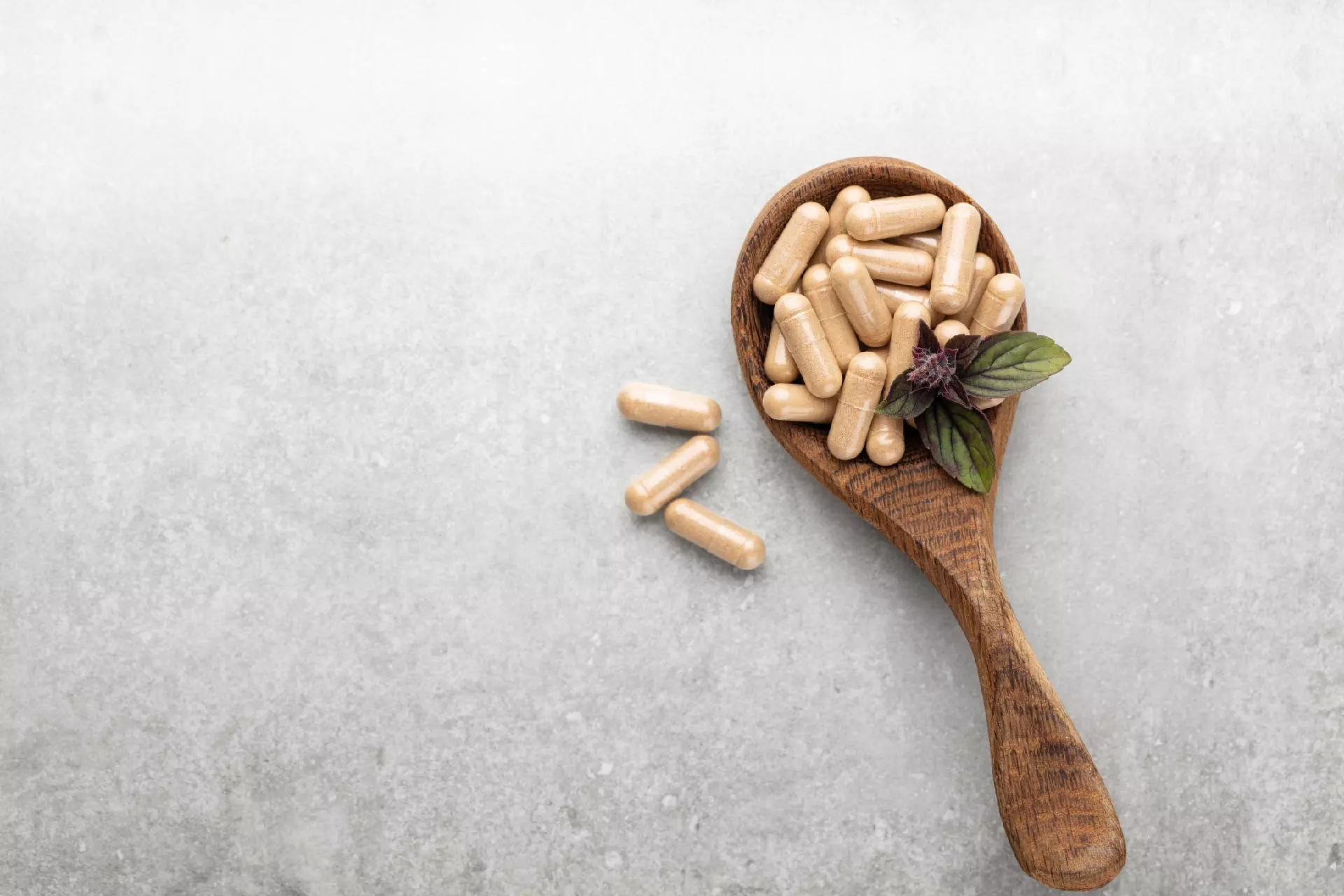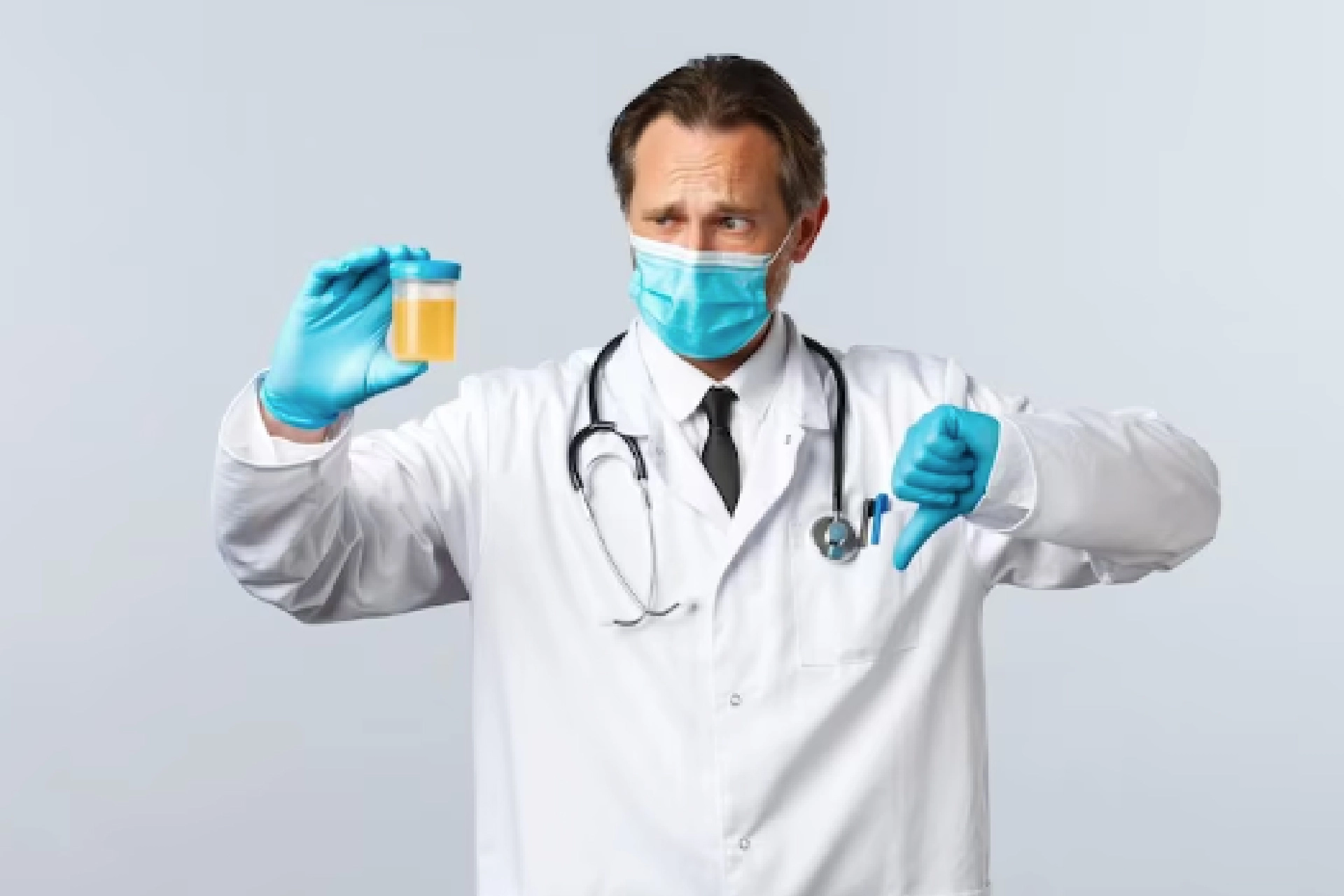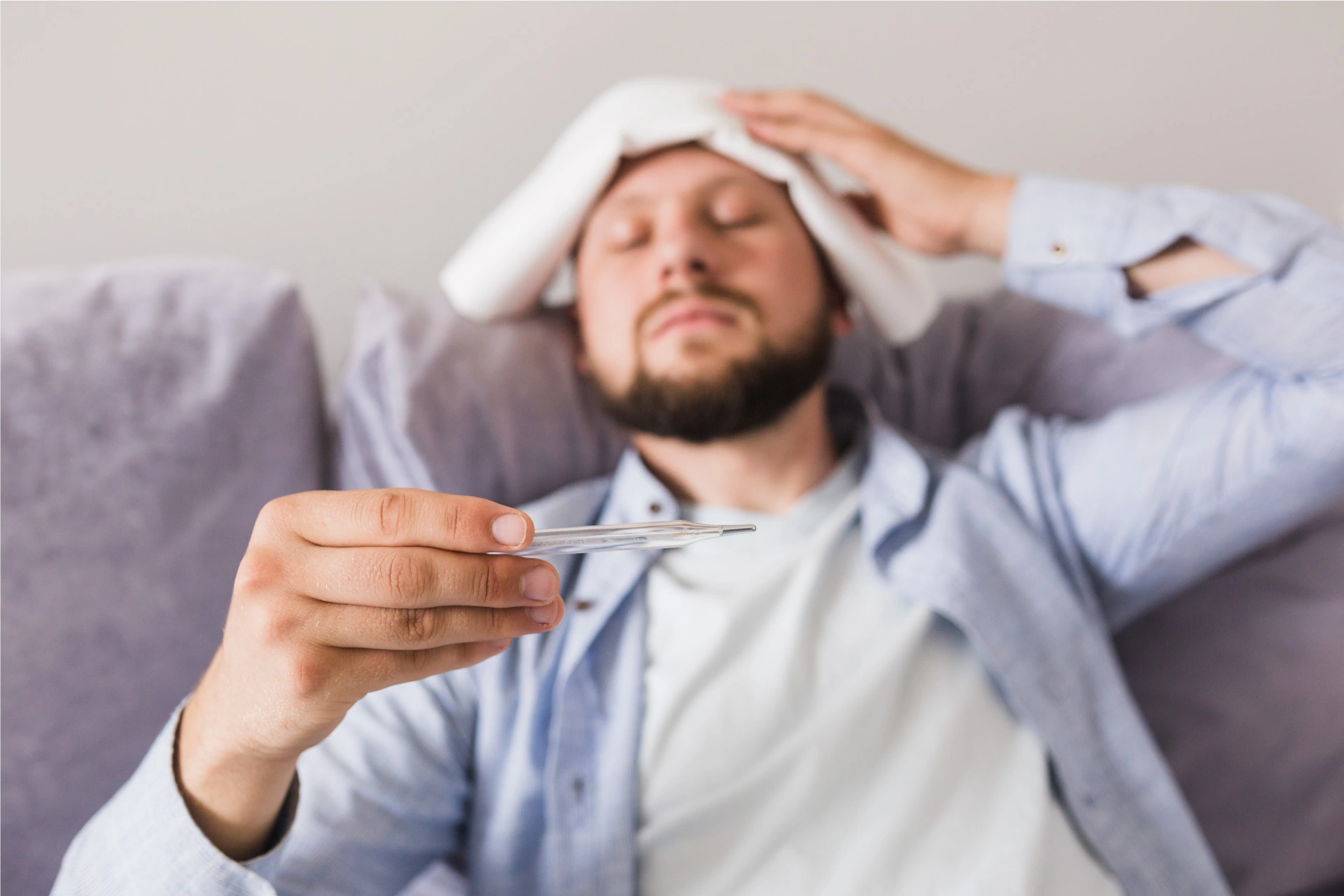General Health | 7 min read
Hand Washing Steps: How to Wash Your Hands Properly
Medically reviewed by
Table of Content
Synopsis
Washing your hands helps eliminate germs and stops you from contracting or spreading them around. It is an easy, effective, and evidence-based practice that can protect you against various types of diseases and hence, eliminate health risks.
Key Takeaways
- Washing your hands helps to get rid of harmful germs, and stay healthy
- Following proper hand washing steps is vital to ensure your hands are clean and germ-free
- Children who are prone to contract infections must understand the importance of keeping their hands clean
Why is Hand Washing So Important?
Have you ever wondered if your hand washing steps are right? We can't always keep our hands free from harmful pathogens. As we do our daily activities, our hands collect many germs. However, washing your hands is the best way to eliminate germs, avoid sickness, and prevent the spread of germs. Whether at home, work, or traveling, washing your hands with soap can protect you from harmful pathogens.
According to the CDC (Centre for Disease Control and Prevention), proper hand hygiene is essential to lower the transmission of infectious diseases. Research shows that handwashing significantly reduces the rates of respiratory infections by 23 % and gastrointestinal infections by 48%. [1]
For this reason, National Handwashing Awareness Week is held annually to spread awareness of the importance of hand hygiene.
About 1.8 million children die each year from diarrheal diseases and pneumonia. Washing hands is a simple solution to prevent pneumonia and other diseases. For example, washing hands with soap can protect one of every three children who get sick from diarrhea. It can also help one out of five children suffering from pneumonia. [2]
Proper hand washing can also reduce the risk of:
- Colds and flu
- Eye infections
- Viral infections like coronavirus
- Superbugs like MRSA
- Spreading contagious diseases
- Decrease the chance of antibiotic resistance
How Does Hand Washing Reduce Disease Transmission?
People often touch their eyes, mouth, and nose without realising it. This is how germs get into the body and make us sick. In addition, germs from unwashed hands get transferred to objects such as handrails, table tops, lift buttons, and then to another person's hand. Therefore, washing your hands is an easy way to save yourself and others from falling sick.
We'll now look at the key hand washing steps to ensure your hands are germ-free.
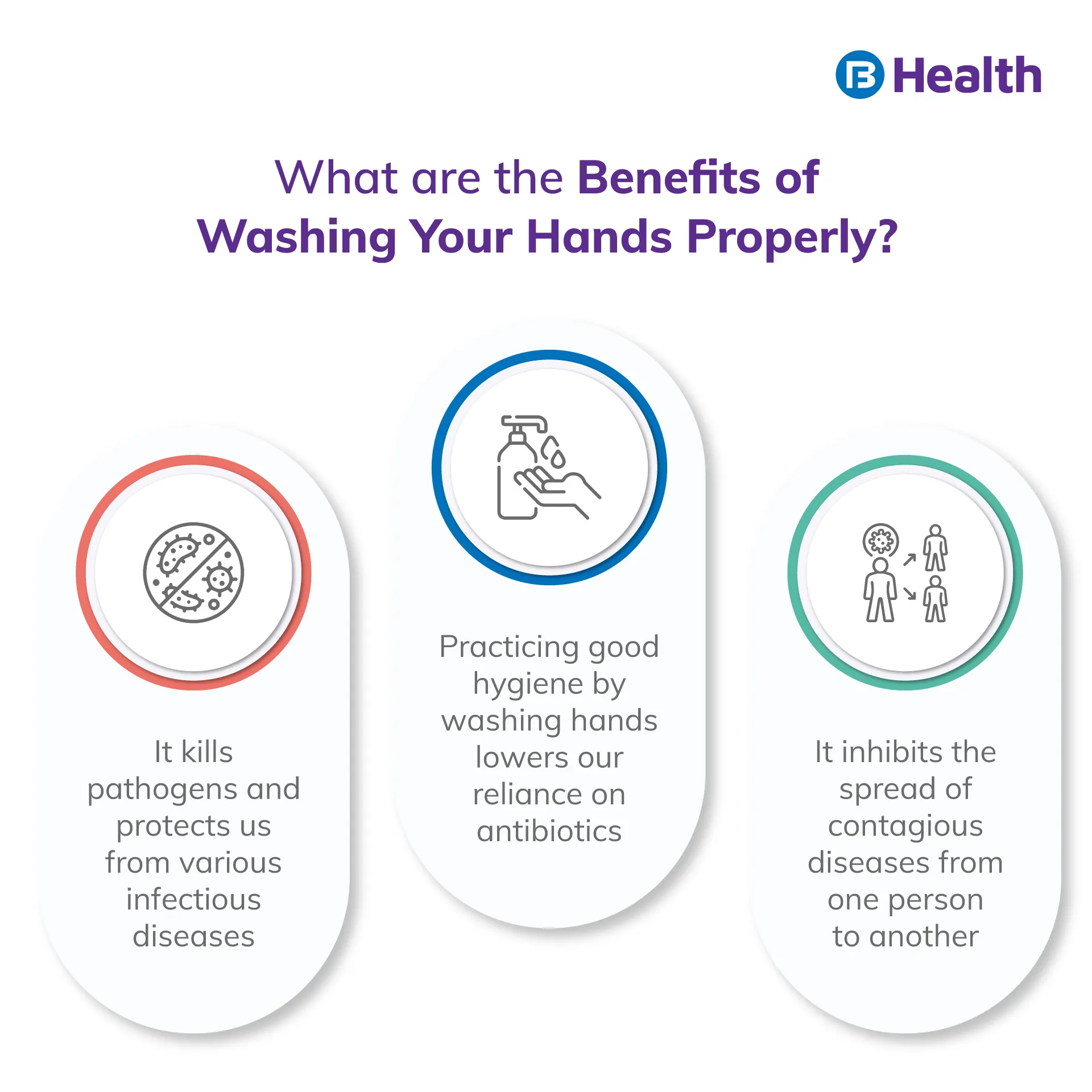
7 Hand Washing Steps
Washing your hands is an easy and effective method to eliminate illnesses. Follow this handwashing procedure to make sure you are cleaning your hands properly:
- Use clean water to wet your hands
- Apply sufficient soap to cover all the surfaces of your hands
- Lather your hands and thoroughly rub them with soap. Make sure you don't miss the backs of your hands, wrists, the space between your fingers, or under your fingernails
- Handwashing time should be a minimum of 20 seconds
- Rinse your hands with clean running water
- Dry your hands with a clean towel or air-dry them
- Turn off the tap with a towel
Make sure to wash your hands for a minimum of 20 seconds; otherwise, you might not kill all the germs.
Children are more susceptible to infections as they have underdeveloped immune systems. They are also more likely to touch things in their surroundings. Therefore, it is necessary to teach them how to wash their hands. Teaching children the importance of washing their hands and asking them to follow the right hand washing steps during childhood makes it a healthy habit in adulthood.
When to Wash Your Hands
Besides following the proper hand washing steps, it is also important to focus on the correct time to wash your hands.
It is good practice to clean your hands, especially during these situations frequently:
- Before, during, and after preparing or cooking food
- Before and after eating food or drinking
- Before and after caring for someone sick or exposed to an infectious illness
- Before and after treating a cut, burn, or wound
- Before and after touching anything in public spaces, like railings
- Before and after entering a doctor's office, hospital, nursing home, or any other healthcare setting
- Before and after touching your phone
- Before taking any medications, such as eye drops or pills
- After using the toilet
- After touching garbage or dirt
- After coughing, sneezing, or blowing your nose
- After touching an animal, animal waste, or even animal feed
- After shaking hands with others
- After changing diapers or cleaning bodily waste off others
- After handling money or receipts
- After accepting parcels or deliveries
Do I Need to Use Antibacterial Soap Rather than Plain Soap?
According to studies, there's no proof using antibacterial soap has any added health benefits to ordinary soap. In addition, using antibacterial soaps contributes to antibiotic resistance.
Additional Read: Risks and benefits of antibiotic use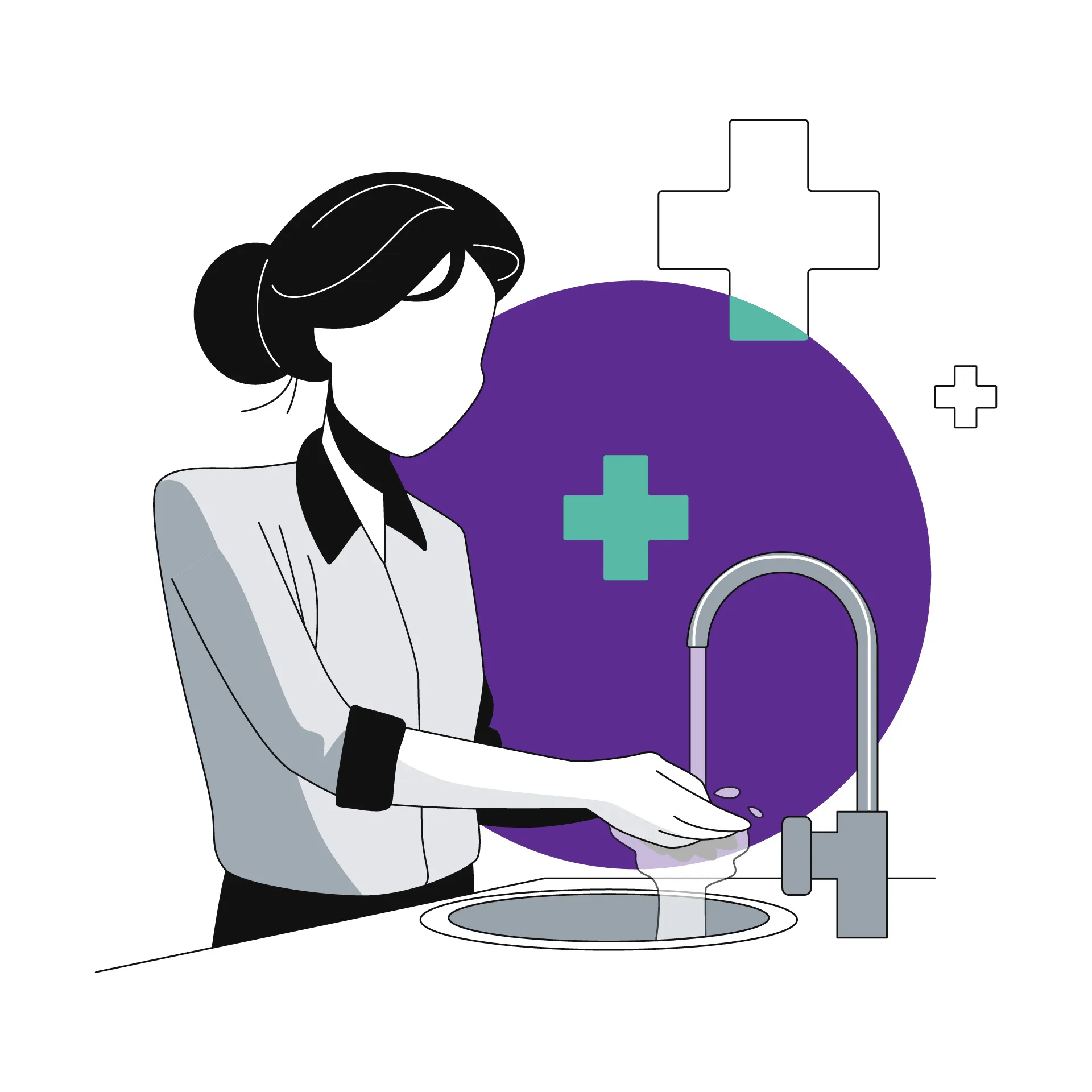
What Should I do if Soap and Water aren't Available?
Washing hands can help get rid of both germs and dirt. But if you do not have access to soap and water, you can complete your hand washing steps by using an alcohol-based hand sanitizer with a 60% alcohol concentration.
Ethanol, isopropanol, or n- propanol are some of the main contents in hand sanitizers.
Sanitizers that show the most antimicrobial activity include:
- 60 to 85 % ethanol
- 60 to 80 % isopropanol
- 60 to 80% n-propanol
Propanol is most effective against bacteria, whereas ethanol works best against viruses. But similar to handwashing, its efficacy depends on using the right technique.
How to Clean Your Hands with a Hand Sanitizer?
- Apply 3 to 5 ml or approximately one teaspoon of gel to the palm of your hands
- Rub your hands and make sure the gel covers your entire hands
- Keep rubbing for 20 seconds and wait until your hands dry
According to both previous and current research, alcohol-based hand sanitizers destroy many disease-causing agents, such as:
- The flu virus
- HIV
- E. coli
- Hepatitis B and C
- SARS coronaviruses
- MERS coronaviruses
- Zika
- Ebola
Is Handwashing Better than Using a Sanitizer?
While sanitizers can quickly reduce the number of germs, they are not as efficient as simply washing your hands. Here's why:
- They can't get rid of all types of germs
- Not as useful when hands are dirty or greasy
- Can't remove harmful chemicals like pesticides or heavy metals from hands
How to Prevent Dry or Damaged Skin
Handwashing helps to prevent illness, but this can become counterproductive as frequent handwashing can dry and irritate your skin, raising the risk of infections.
To maintain good hand hygiene while making sure you don't damage your skin, follow these hand washing steps and care tips:
Avoid hot water
Wash with lukewarm or cool water. Hot water tends to be more drying and isn't even more effective than room temperature water.
Use a moisturising soap
Choose a soap with a creamier consistency, avoid bar soaps and opt for liquid soaps.
Use a moisturiser
Your skin is the main barrier between you and the outside world. When your skin is moist, it can protect you better from germs. But damaged and dry skin can make you more susceptible to germs entering your body. To help retain moisture and keep your skin healthy, apply hand cream, ointment, or a balm after you wash your hands. Also, make sure your soap includes these ingredients to preserve moisture:
- Humectants: These attract moisture from the air and include glycerine, hyaluronic acid, or honey
- Occlusive: These create a barrier on your skin to prevent moisture loss and include lanolin, squalene, capric triglycerides, or mineral oil
- Emollients: These create an oily film to lock water inside the skin and include dimethicone or isopropyl myristate
Another point to remember is that alcohol-based sanitizers can be incredibly drying on the skin, so it's important to balance them out with these moisture-preserving ingredients to replace the water stripped by the alcohol.
In case of extreme dryness, irritation, and redness, it is essential to consult a general physician.
Following the seven handwashing steps is the ideal method for hand hygiene. Although, if soap and water are not readily available, using alcohol-based sanitizers with a minimum of 60% alcohol can also be an alternative. Handwashing is a small measure that could potentially save many lives.
To find out more ways to stay healthy or get an online doctor consultation for any queries, head on to Bajaj Finserv Health.
References
- https://www.cdc.gov/handwashing/why-handwashing.html
- https://www.unicef.org/press-releases/pneumonia-and-diarrhoea-kill-14-million-children-each-year-more-all-other-childhood
Disclaimer
Please note that this article is solely meant for informational purposes and Bajaj Finserv Health Limited (“BFHL”) does not shoulder any responsibility of the views/advice/information expressed/given by the writer/reviewer/originator. This article should not be considered as a substitute for any medical advice, diagnosis or treatment. Always consult with your trusted physician/qualified healthcare professional to evaluate your medical condition. The above article has been reviewed by a qualified doctor and BFHL is not responsible for any damages for any information or services provided by any third party.

